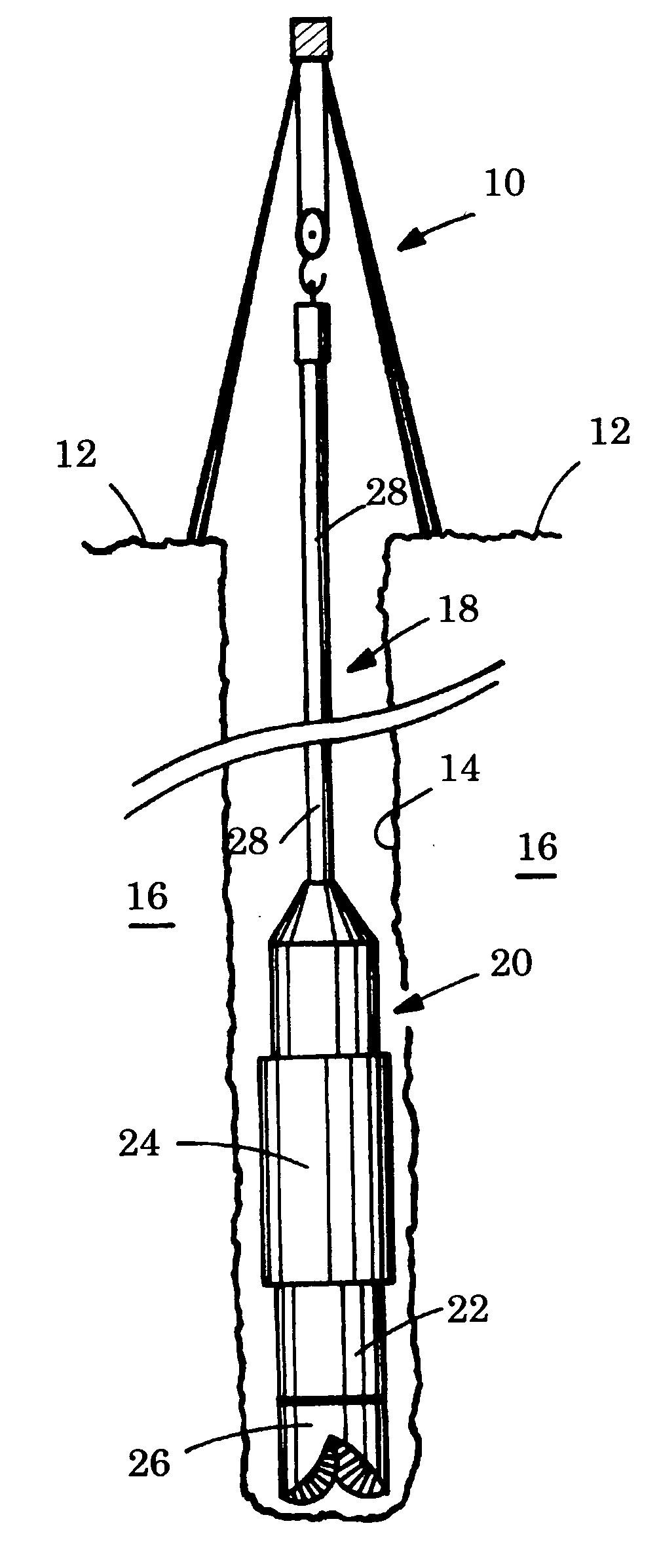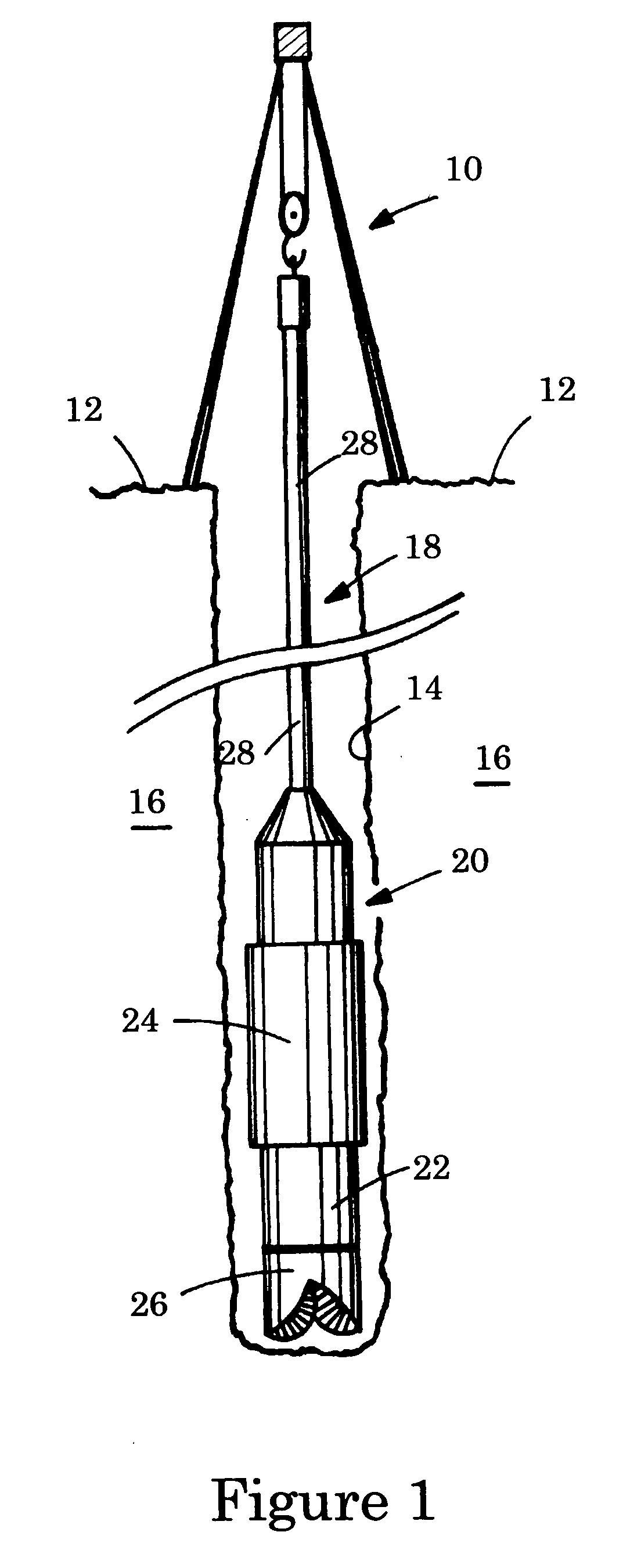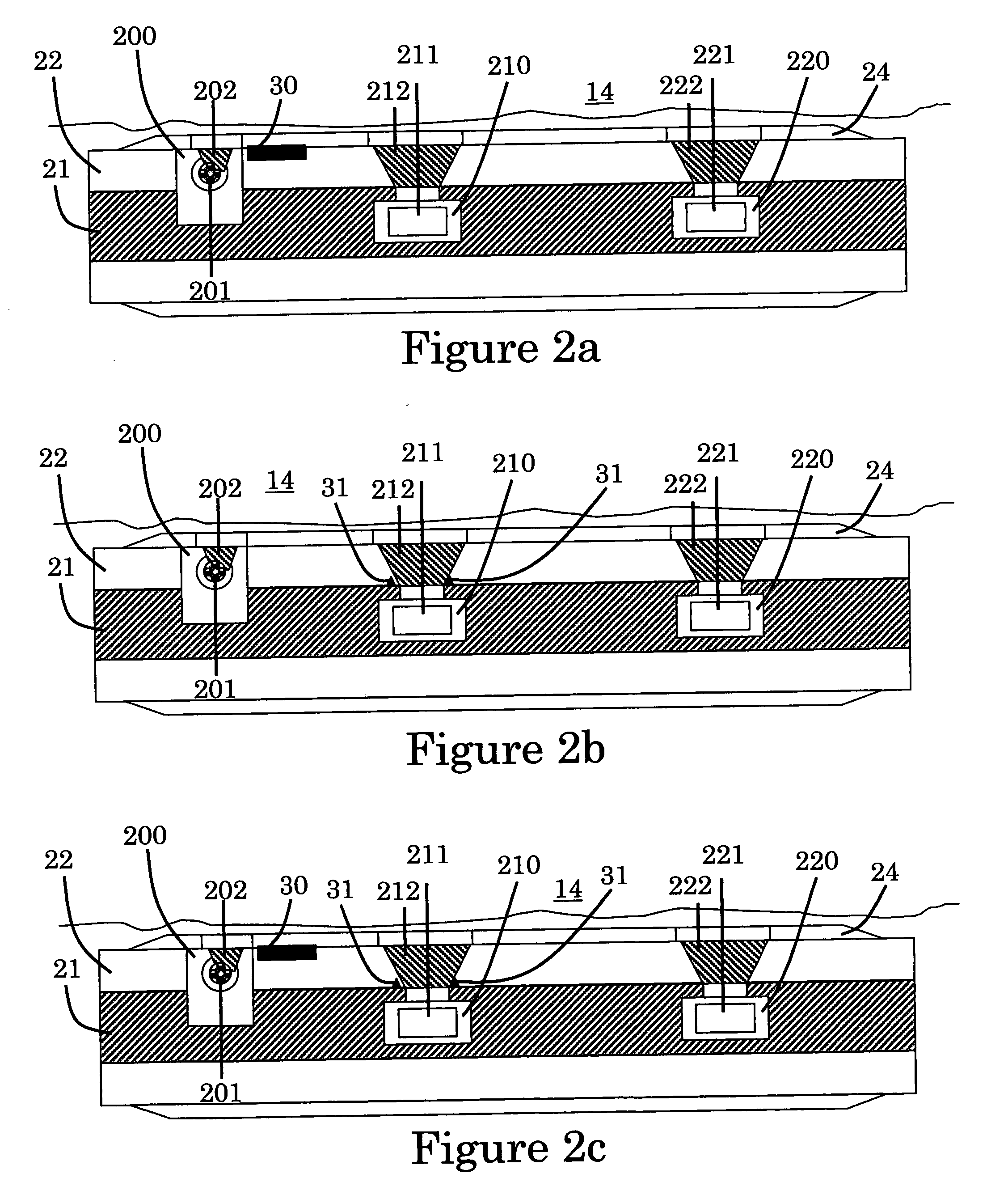Logging tool with a parasitic radiation shield and method of logging with such a tool
- Summary
- Abstract
- Description
- Claims
- Application Information
AI Technical Summary
Benefits of technology
Problems solved by technology
Method used
Image
Examples
first embodiment
[0022]FIGS. 2a, 2b and 2c illustrate conceptually radiation shields on the tool 20 of FIG. 1 shown in side view on the major axis of the tool. In a first embodiment, the tool is a logging-while-drilling gamma-ray scattering tool with a chemical radioactive source. The tool 20 is made of an elongated tool body 21 and a drill collar 22 disposed peripherally around the tool body 21. In the illustrated tool, a stabilizer 24 is disposed peripherally around the drill collar 22; the stabilizer is optional and reduces the amount of mud between the tool and the formation wall and therefore the influence of the borehole fluid on the measurement. The tool 20 receives one source collimation window 202 through which the earth formation 16 is illuminated by the radiation emitted from the radioactive source, and two detector collimation windows 212 and 222 through which the radiation coming from the outside of the tool 20 is detected. In the illustrated tool, a source of gamma radiation 201 illumi...
second embodiment
[0035] In a second embodiment, the tool 20 is a logging-while-drilling density tool with an electronic radiation source. The source 201 is an x-rays generator. The shielding materials need to be inserted into the structural materials of the tool body, collar or stabilizer with the intent to optimize shielding with a minimal impact on the structural strength of the tool. Shielding 5 materials for lower energy gamma-rays or x-rays could be lighter materials.
third embodiment
[0036] In a third embodiment, the tool 20 is a logging-while-drilling neutron scattering tool with a chemical or electronic neutron source. The source 201 is a chemical source, as Radium-Beryllium source or an electronic source like pulsed neutron generator. The shielding materials need to be inserted into the structural materials of the tool body, collar or stabilizer with the 10 intent to optimize shielding with a minimal impact on the structural strength of the tool. Shielding materials for neutrons will typically be hydrogenous materials and / or neutron absorbing materials, like boron or cadmium for slow neutrons; and will typically be high atomic number materials like tungsten and / or hydrogenous materials for fast neutrons.
PUM
 Login to View More
Login to View More Abstract
Description
Claims
Application Information
 Login to View More
Login to View More - R&D
- Intellectual Property
- Life Sciences
- Materials
- Tech Scout
- Unparalleled Data Quality
- Higher Quality Content
- 60% Fewer Hallucinations
Browse by: Latest US Patents, China's latest patents, Technical Efficacy Thesaurus, Application Domain, Technology Topic, Popular Technical Reports.
© 2025 PatSnap. All rights reserved.Legal|Privacy policy|Modern Slavery Act Transparency Statement|Sitemap|About US| Contact US: help@patsnap.com



